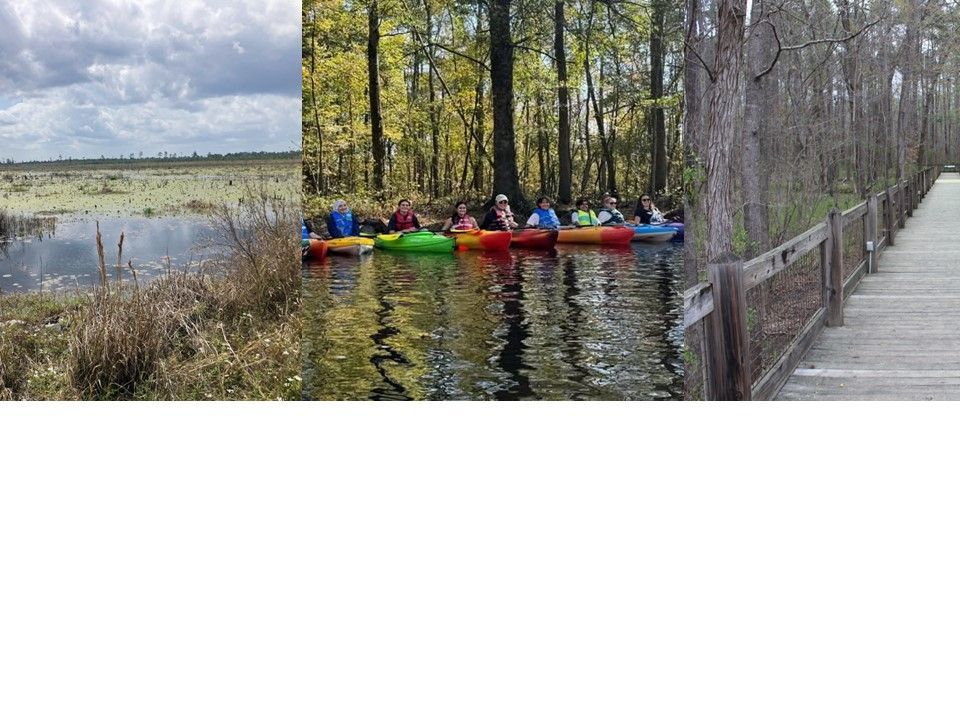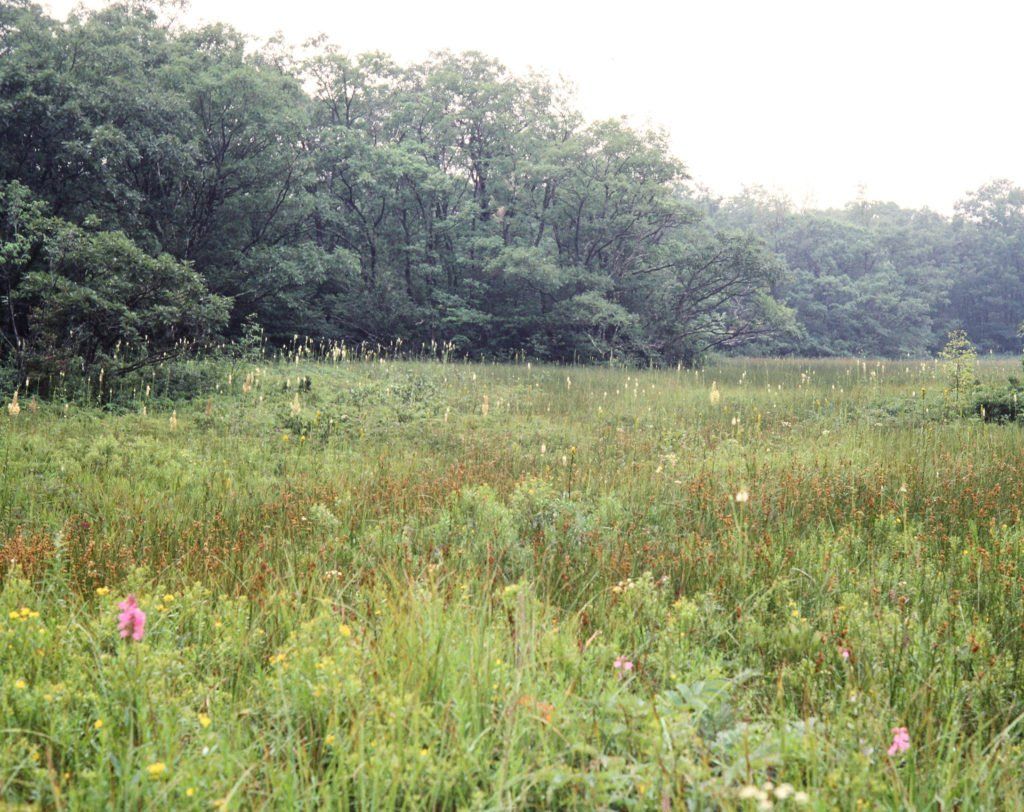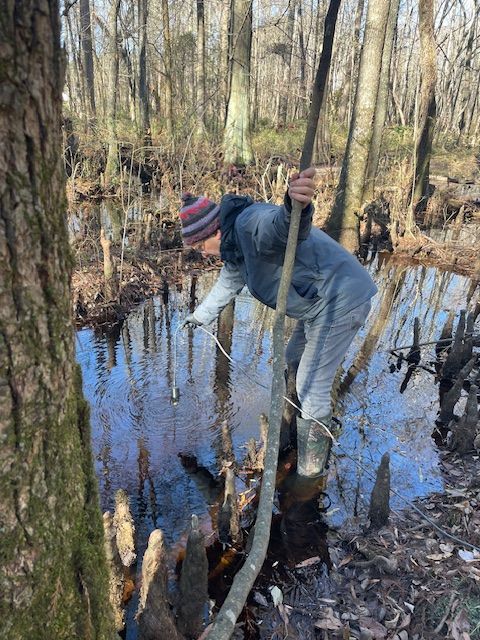VWMP Wetland Warriors Get Dirty in the Wetlands for Our Last Monitoring Event of 2022
Welcome to all of our new volunteers and it was great to see all of our returning ones! The December monitoring days for the Volunteer Wetland Monitoring Program (VWMP) may have been wet, but that doesn’t scare away our amazing volunteers!
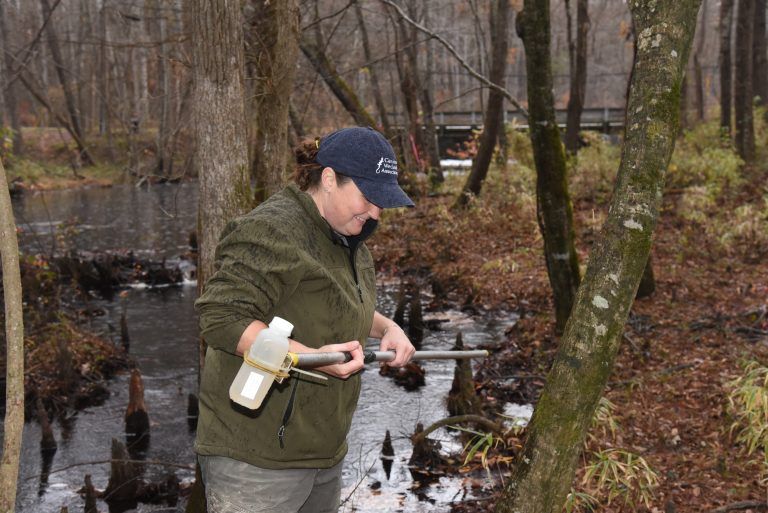
Our volunteers aren't afraid of a little rain!
We were able to avoid the rain for our first monitoring site at Robertson Mill Pond, but it caught up with us on our second site, leading us to take shelter in the pavilion while we completed our soil profile descriptions. Things were a bit drier at Hemlock Bluffs and we had a beautiful day on Sunday at Mason Farms. Luckily, after all the rain, the water was still low enough in Morgan Creek for our vehicles to ford the stream and make it to our farthest monitoring site. Although the weather at Mason Farms was nice, the wetland was much wetter than in September, with standing water on much of the surface. Winter is the wet season here in North Carolina, with slightly more precipitation than in warmer months and less transpiration from plants that have died back or gone dormant for winter. This means more water is left in the ground and water tables are higher.
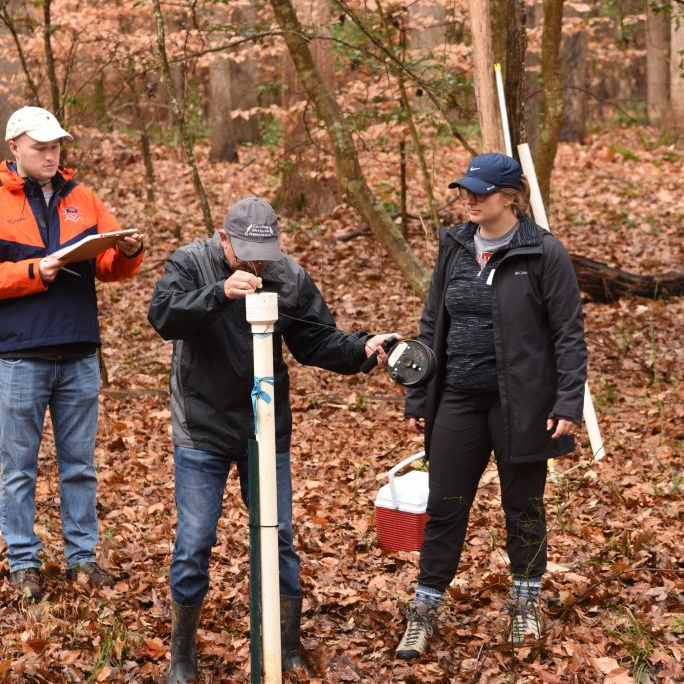
Veteran volunteer Tom Schwarcz teaching new volunteers Carly Catella and Ryan Kilgore how to measure the water table depth.
WATER SAMPLING
This weekend we monitored hydrology and water quality, as always, but we had some of our experienced volunteers teach our new volunteers the tricks of the trade! We also had volunteers test their technological prowess by using WildNote to fill out our data forms.
SOIL SAMPLING
This weekend we took a look at our wetland soils! In addition to wetland hydrology (water table within 12” of the surface for at least 5% of the growing season) and hydrophytic (water tolerant) vegetation, wetlands must also have hydric soils to be considered jurisdictional wetlands. Hydric soils are soils that exhibit features related to long periods of saturation. These features can take many forms, but are caused by the metabolic processes of anaerobic bacteria. In the piedmont, these soils are often gray in color with mottles (patches) of reddish/orange soil mixed in. The gray colors are a result of the iron oxides in the soils being used by bacteria, instead of oxygen for their metabolic processes. This leaches the red color from the soil. In some areas where organic material was present (such as roots) or there are pockets of air in the soil, bacteria are able to use oxygen for their metabolisms and these spots still have a reddish, orange color. These unique colorations in the soil take a long time to develop and can help wetland scientists determine what the hydrology of a site is like over long periods of time. This is especially important where we don’t have a lot of past well monitoring data.
Determining whether we have these unique colorations in the right amount, caused us to dig deep and find our inner-artist!
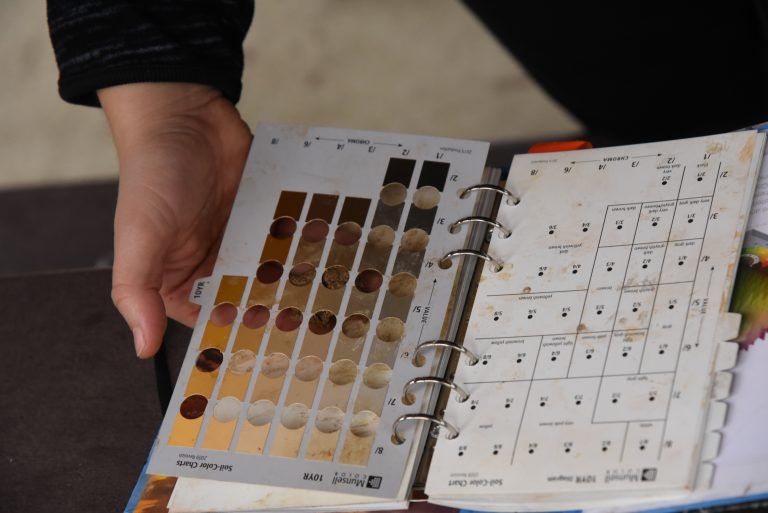
Comparing soil colors to our Munsell book.
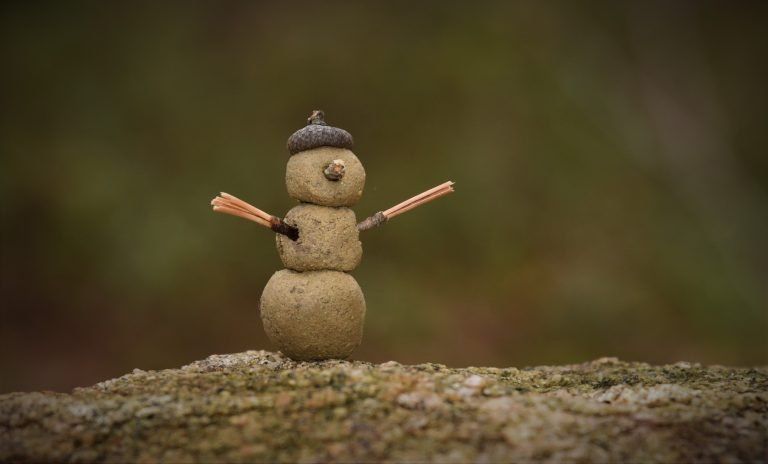
Volunteer Mattie Frazier took her artistic endeavors even further, by using the soil to create “the bestest snowman that ever was!”
We had to match the colors of the soil to the colors to the colored chips in our Munsell soil books and record all of the colors in about 3’ of soil! We also got dirty, rubbing the soil between our fingers to determine soil textures at every depth. We also took intact soil cores that will be analyzed back in the lab for soil organic matter. Since soils change very slowly over time, we won’t need to sample soils every year that we monitor. You can see descriptions of the mapped soil profiles here and you can explore soil maps all over the country at https://websoilsurvey.sc.egov.usda.gov/App/HomePage.htm.
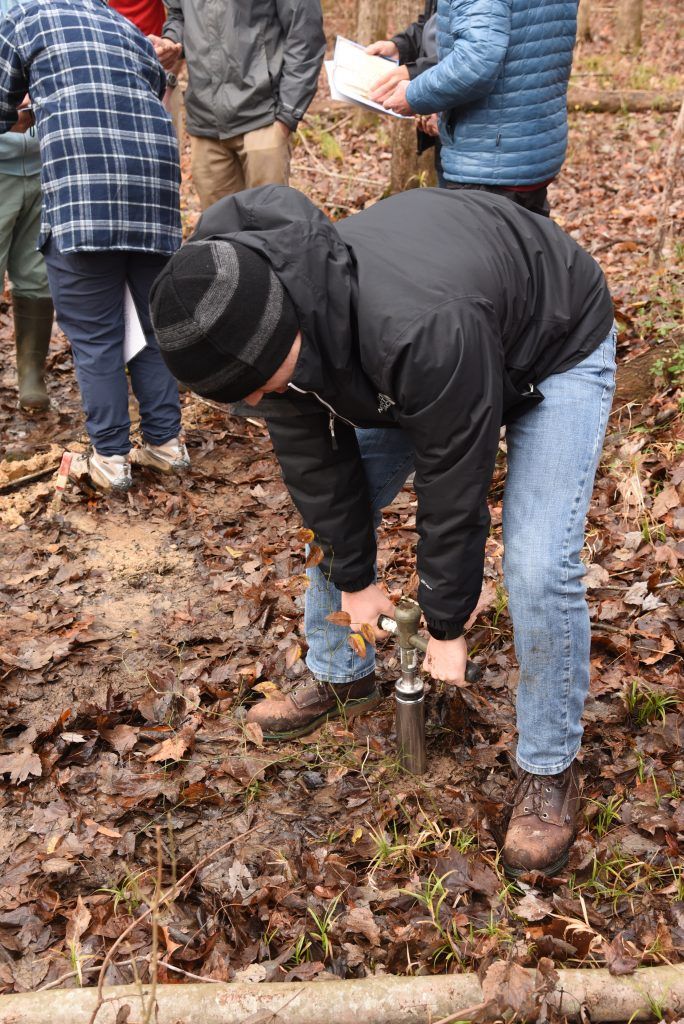
Ryan Kilgore getting his workout, taking our organic matter sample.
Thanks to the great commitment of our volunteers, we were able to achieve so much! Both Mickey Jo Sorrell and Paul Jadot, passed 25 hours of volunteer work this weekend and earned their awesome Carolina Wetlands Association hats! Mickey Jo also won a $50 Amazon gift card for filling out our volunteer survey. Thanks to everyone who took the time to fill one out and give us feedback on the program. Your feedback and commitment will enable us to have an even more successful program next year and to hopefully be able to expand the program further in the future.
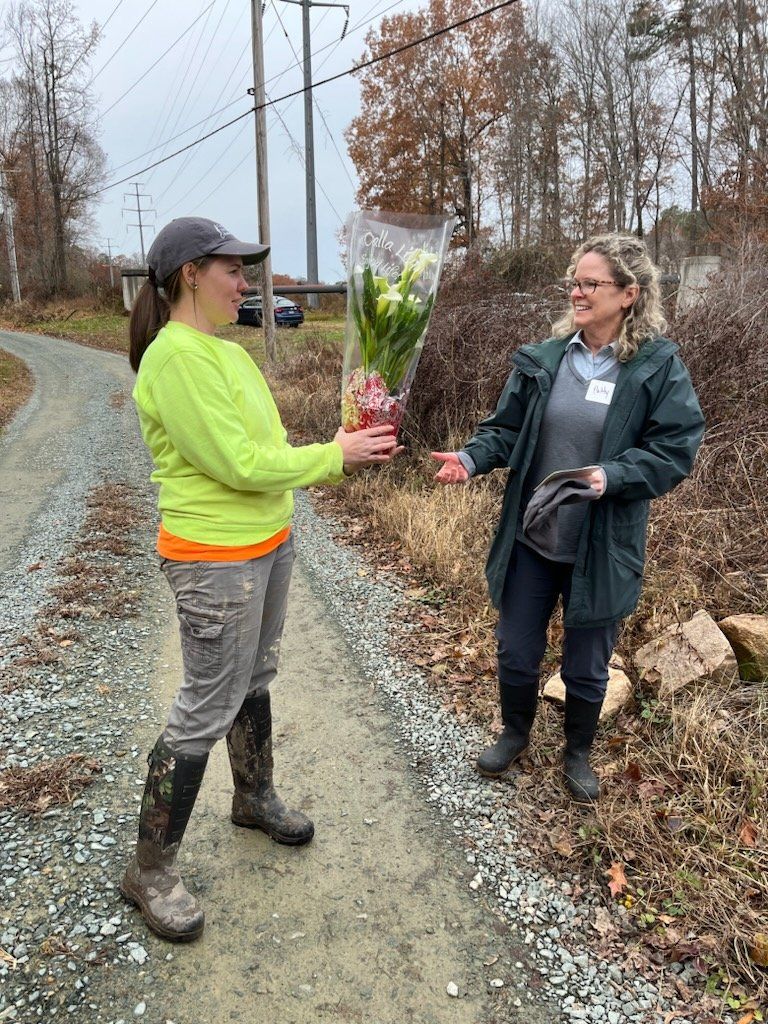
We'll miss you Patty!
Sadly, this weekend marked Patty’s last field days as Volunteer Coordinator for this project. She will be greatly missed, but she is moving on to a full time position at NC State, working with Dr. Burchell. Fortunately, it won’t be goodbye forever- she’ll still be involved with the project overall.
I will be replacing her as Volunteer Coordinator and I look forward to working with all of you as the VWMP continues into its second year!
– Chase Bergeson, Volunteer Coordinator for the VWMP

Although we weren’t monitoring for amphibians this weekend, Thomas Reed still managed to find us a Cope’s gray treefrog.
All photo credits: Thomas Reed
